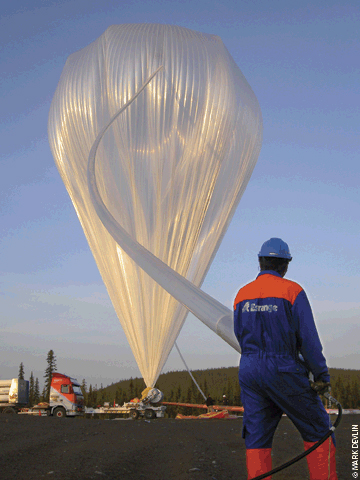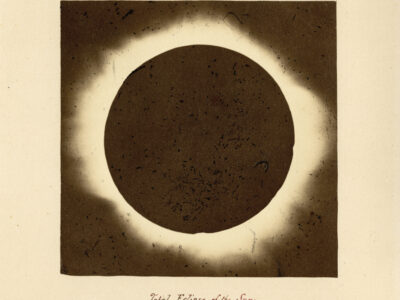
It was no ordinary balloon that Dr. Mark Devlin, associate professor of physics and astronomy, was describing: “If you put it into Franklin Field and inflated it all the way, it would push people out of their seats.”
Fortunately, the 37-million-cubic-foot helium balloon he was referring to reached its full capacity far from any Quaker fans—125,000 feet in the air—while back on the ground, an international team of scientists gathered data from the most sensitive telescope of its kind to take a balloon ride.
Devlin, principal investigator of the Balloon-Borne Large Aperture Sub-millimeter Telescope (BLAST) project, spoke to the Gazette in July, shortly after the balloon completed its unmanned, four-day journey. It began at a rocket base in Kiruna, Sweden, just north of the Arctic Circle, and ended in Canada’s Northwest Territories.

Though Devlin has been launching balloon telescopes since 1990, this one is “by far the most sophisticated thing we’ve done,” he said. Weighing two tons, the telescope has 260 detectors that can capture light at three different wavelengths.
While aloft, BLAST made observations of 16 different objects in the Milky Way, including star-forming regions where clouds of gas collapse into stars. It also was able to make some observations of nearby galaxies. The data analysis will take about a year, Devlin said.
One advantage of balloon-borne astronomy is that it can be done at a fraction of the cost of putting a satellite into orbit. That’s not to say the logistics are simple, Devlin added. “They’re really big things, and the weather has to be just right and the launch pad has to be enormous.”
The crew spent many weeks conducting equipment repairs and waiting out Kiruna’s snow and rain before launching BLAST. “We were concerned the weather was not going to turn around,” he said. On July 12, the equipment was all set to go when a last-minute rainstorm soaked the telescope’s mirror. “I had to go up on a huge lift about 30 feet in the air,” Devlin said. “I was leaning over the side of the bucket with a big pole with a towel on one end to clean up. That was disconcerting … but we got it off the ground and got some data.”
—S.F.




